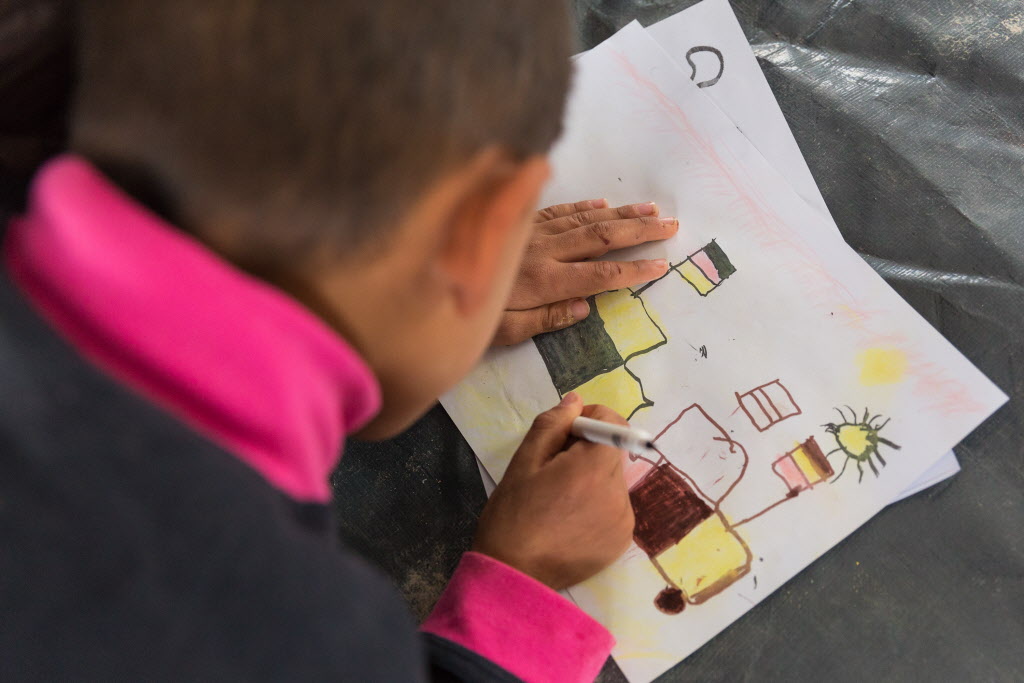
ERBIL, Iraq (November 16, 2016) — Children from Mosul are reeling from two years of conflict, say World Vision staff.
One month after forces launched the battle to re-take the city, more than 50,000 people have been displaced – almost half are children under 18.
At Zelican camp, 15 miles outside of Mosul, children who lived under ISIL say they had years of nightmares from witnessing atrocities.
Hamaad*, 14, said that his village was bombed during an airstrike.
“A remote controlled plane [drone] struck my neighbour’s house and it was very strong – the sound was like ‘whoosh’,” Hamaad said. “Five people died and the rest were hurt. I thought, ‘Now it’s going to hit us!’ I was scared by that bad plane.”
Raqwa*, 12 years old, said: “We have seen bombs and airplanes and heard the sounds of rockets. People fired weapons at the houses and I was so afraid.”
She said that she nightmares of bombings most nights; they only stopped when she reached safety at the camp several weeks ago.
Ahmed*, 8 years old, told World Vision staff that his biggest fear today is gunfire.
“The sound of the bullets scare me – the ‘pawh’ ‘pawh’ ‘pawh’,” Ahmed said. “We won’t ever go back [to Mosul]. We don’t love it anymore.”
More than 50 percent of those living at Zelican camp are children, where World Vision is running a Child Friendly Space that offers games, art classes and drama performances with trained child protection workers. For some, it’s the first time they’ve played games in more than two years.
Khalil Sleiman, World Vision Response Manager for northern Iraq, said:
“We are appalled at the violent stories children from Mosul have been telling us.
“The next few weeks are crucial to help them begin the recovery process. When children are able to access informal learning centers like the Child Friendly Space, they can start to familiarize themselves with their childhood again.
“Children experience a range of emotions when they arrive at the space for the first time and are invited to play. Today they eagerly wait outside until it opens – as the staff arrive their cheers can be heard across the camp.
“It’s clear to me that, despite enduring terrible circumstances, we’re able to give them hope again.”
*Names have been changed to protect identities
– END –
About World Vision:
World Vision is a Christian humanitarian organization conducting relief, development, and advocacy activities in its work with children, families, and their communities in nearly 100 countries to help them reach their full potential by tackling the causes of poverty and injustice. World Vision serves all people regardless of religion, race, ethnicity, or gender. For more information, please visit www.WorldVision.org/media-center/ or on Twitter @WorldVisionUSA.